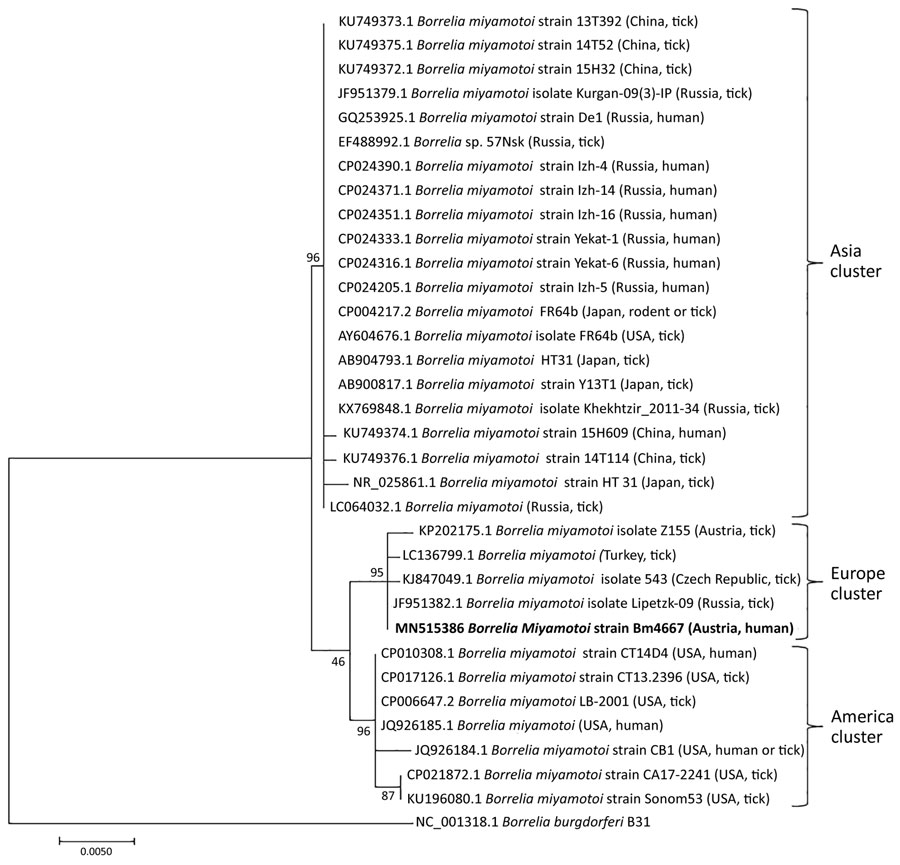Volume 26, Number 9—September 2020
Dispatch
Human Borrelia miyamotoi Infection, Austria
Figure 2

Figure 2. Phylogenetic tree based on the 16S rRNA gene of Borrelia miyamotoi from a patient in Austria (Bm4667; arrow) and reference sequences. This phylogenetic tree was constructed by using the maximum-likelihood method based on the general time reversible model. The tree is drawn to scale, with bootstrap values shown at the nodes of the tree, inferred from 600 replicates. A total of 1,199 bp of B. miyamotoi 16S rRNA gene sequences was used in the final dataset, which involved 34 nt sequences and in which gaps and missing data were deleted. Evolutionary analyses were conducted in MEGA7 (https://www.megasoftware.net). The patient isolate clustered together with strains found in ticks from Europe. Information of the source and country for reference isolates is shown in parentheses after strain designation. Scale bar indicates substitutions per site.